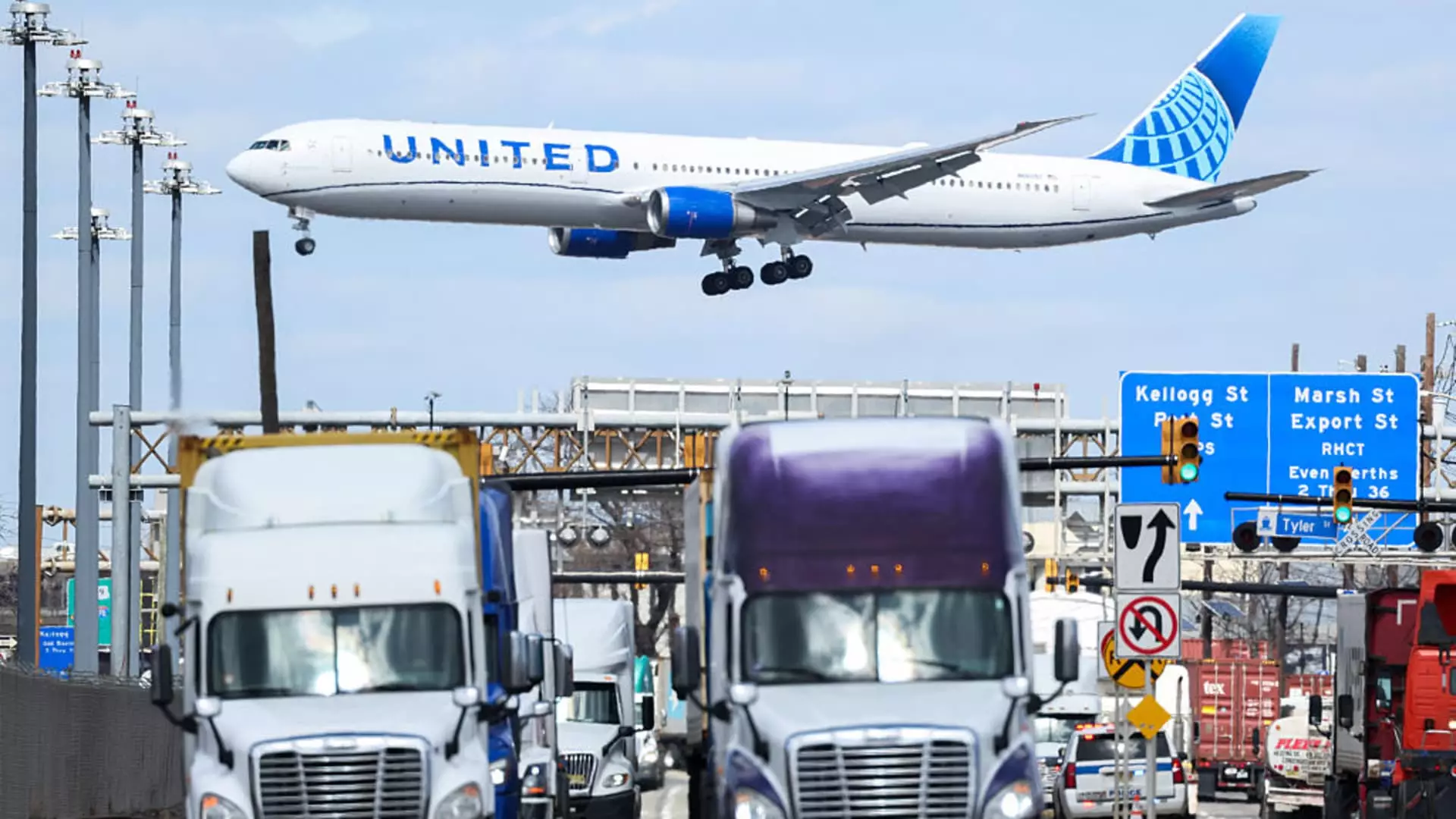In the ever-turbulent world of airline economics, United Airlines is making headlines for its audacious stance amid a looming recession. The carrier recently reaffirmed its full-year forecast but added a somewhat unusual secondary forecast that would hedge against the possibility of a downturn. Labeling the macroeconomic landscape as “impossible to predict,” United Airlines finds itself straddling a divide—assured in its ability to generate profits yet wary of the very real threat of economic instability. This duality reflects a precarious balancing act that companies must perform in uncertain times, yet raises questions about the strategic foresight essential in today’s capitalist climate.
United Airlines anticipates an adjusted earnings per share (EPS) of $11.50 to $13.50, but should the economy vanish into recession, its forecast plummets to a range of $7 to $9 per share. The airline appears to be navigating uncharted waters, demonstrating that while a confident outlook is necessary, being overly optimistic can strain credibility in the eyes of investors. One must wonder whether the airline’s management is genuinely prepared for the worst or merely playing a risky game of hope.
Cutting Back to Thrive
In a bold move to align with disappointing domestic travel demand, United Airlines has announced a cutback in its domestic flights by approximately 4%. This decision follows a broader policy shift that reveals a greater understanding of the market’s capricious nature. While bookings for premium international trips are demonstrably strong, the carrier is keenly aware of the pitfalls of excess capacity in a shrunken market. What stands out here is not just United’s readiness to adapt to changing consumer preferences, but the risky undertones that accompany such decisions.
As its rival Delta Air Lines also takes a step back from aggressive growth plans, the narrative emerges: precautionary measures are increasingly becoming the name of the game. The airline industry has historically swung between profitability and peril, and, with the current trajectory of economic indicators, the cautious pivot makes sense. However, how long until this measured strategy becomes a celebrated standard or merely a stopgap against impending economic turbulence?
Financial Gains Masking Fundamental Weaknesses
Despite the weight of potential economic disruptions, United Airlines recently reported a profitable first quarter, posting earnings of $387 million, or $1.16 per share—evidence that its operational strategies may be holding steady for now. Yet, one cannot overlook that this success came off the backs of exceptionally strong performances in international routes, contrasting the disheartening 3.9% revenue decline in domestic unit sales. This disparity suggests that while United may enjoy a temporary surge in profitability, deeper systemic issues lurk beneath the surface, faithfully reflecting the airline industry’s cyclical and often unforgiving nature.
Moreover, the fact that United shares rose significantly in after-hours trading strongly indicates that investors are still persuaded by the potential of high-margin, premium offerings. In times of economic uncertainty, consumer behavior tends to shift, often leaning toward high-quality services that promise value for money, exemplified by a notable 17% increase in premium-cabin bookings year-over-year. The question, however, remains whether this uptick will be sufficient for sustainable growth if macroeconomic conditions worsen, as they seem poised to do under the specter of recession.
Lessons from United’s Strategy
It’s clear that United Airlines is banking on its ability to adapt—indeed, its CEO Scott Kirby cites a multiyear plan that has historically delivered robust margins, regardless of external pressures. However, therein lies both a commendation and a critique: while it’s commendable for United to craft strategies that bolster financial health, the long-term sustainability of these plans warrants skepticism amid economic unpredictability.
As we stand on the precipice of potential economic turmoil, airlines like United must confront fundamental questions regarding their place in an evolving market landscape. Will their attempts at shoring up revenue withstand external pressures, or will they become victims of their own overly optimistic projections? While savvy investors may find comfort in today’s figures, astute observers must remember that market dynamics can shift rapidly, and a delicate balance between ambition and caution is crucial.

